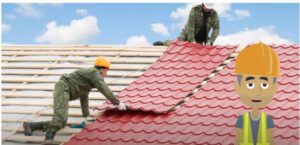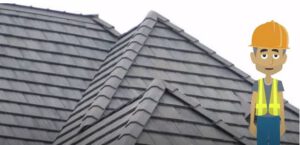The Best Roofing Material for Hot Climates in Australia
 Australia’s unique climate, characterized by scorching summers and mild winters, can present challenges for homeowners when choosing the right roofing material. However, with careful selection and understanding of different roofing materials’ properties, one can not only ensure a comfortable living environment but also significant energy savings. This article explores some of the best roofing materials for hot climates in Australia.
Australia’s unique climate, characterized by scorching summers and mild winters, can present challenges for homeowners when choosing the right roofing material. However, with careful selection and understanding of different roofing materials’ properties, one can not only ensure a comfortable living environment but also significant energy savings. This article explores some of the best roofing materials for hot climates in Australia.
Australian Climate and Roofing Considerations
Most parts of Australia are known for their intense heat, particularly during the summer months. This hot climate necessitates the use of roofing materials that can resist heat absorption, keep the interior cool, and withstand harsh weather conditions.
Best Roofing Materials for Hot Climates
Choosing the right roofing material can greatly affect your home’s comfort and energy efficiency. Below, we explore some of the best options suited for Australia’s hot climate.
Metal Roofing
Metal roofing is a popular choice in Australia due to its durability, lightweight nature, and high heat-reflectivity. Materials such as steel and aluminium can effectively reflect solar radiation, reducing the amount of heat entering the home.
Aluminium, in particular, is known for its superior thermal performance. It reflects more sunlight and emits more of the absorbed heat than most other metals. Additionally, metal roofing is resistant to fire, wind, and rust, making it a robust choice for Australia’s varying weather conditions.
Terracotta and Concrete Tiles
Another excellent option for hot climates is terracotta and concrete tiles. Both materials have natural thermal resistance properties, meaning they can keep your home cool in the summer and warm in the winter.
Terracotta tiles are made from natural clay, offering a timeless aesthetic and excellent durability. These tiles are known for their ability to retain cool temperatures, even under intense heat.
Concrete tiles, on the other hand, offer similar benefits but are usually more cost-effective. They are also available in a variety of colours, which can be chosen to reflect more sunlight and further reduce heat absorption.
Cool Roof Technology
A more modern approach to roofing in hot climates is the use of “cool roofs.” These are roofs designed with highly reflective paint, sheet covering, or tiles. They can reflect more sunlight than traditional roofs, reducing the temperature of the roof surface and the amount of heat transferred into the building.
Factors to Consider When Choosing Material For Hot Climate
Insulation
No matter the roofing material chosen, proper insulation is crucial in maintaining a comfortable indoor temperature. Good insulation will reduce the amount of heat entering your home during summer and retain more heat inside during winter.
Ventilation
Proper ventilation allows hot air to escape from your attic or roof space, reducing the overall heat load on your home. The right ventilation system will help to regulate the temperature of your home and make sure the air in your roof space is not too hot.
Reflectivity
Light-colored or reflective roofs are great choices for hot climates as they can reduce the amount of heat entering your home. They can reflect more sunlight than traditional roofs, reducing the temperature of the roof surface and keeping your home cooler.
Colour
Lighter colours tend to reflect more sunlight and absorb less heat than darker ones. Therefore, opting for lighter roof colours can help keep your home cool. The color you choose should also match your home’s overall exterior design.
Durability
 The durability of your chosen roofing material is an important consideration. You want to make sure that it can withstand extreme weather conditions like heavy rain, hail or snowfall without suffering any damage. Some materials are more
The durability of your chosen roofing material is an important consideration. You want to make sure that it can withstand extreme weather conditions like heavy rain, hail or snowfall without suffering any damage. Some materials are more
Conclusion
Choosing the right roofing material for hot climates in Australia requires consideration of various factors, including durability, cost, energy efficiency, and aesthetics. Metal roofing, terracotta and concrete tiles, and cool roof technology offer excellent performance in hot conditions. Combining these with appropriate insulation, ventilation, and colour selection can help you achieve a cool, comfortable, and energy-efficient home, even in the heart of an Australian summer.